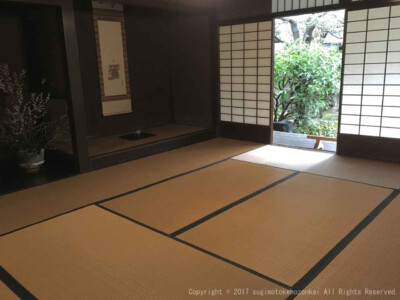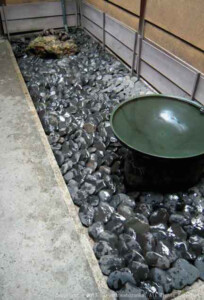
There is a small garden beside the Buddhist room where black stones are layed. The quiet appearance of this garden is close to the heart of prayer.
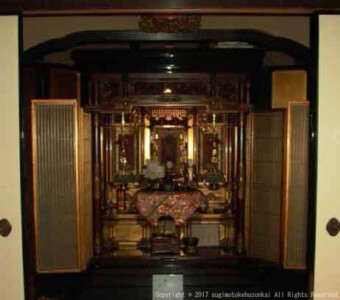
As a merchant’s house, having such a big formal Buddhist altar, and also housing the private prayer room is exceptional. It is the most important room in the entire house and can be said to be at the core of the spirit of the Sugimoto family for generations who have deeply devoted to Buddhism (Nishi-Honganji temple) from the beginning. There is a transom window with a beautiful carving of lotus flowers which was sent to the family temple Junsho-ji Temple(open only on special days in autumn), by the Confucian scholar Edo period Hayashirazan in 1610. When the current Buddist room was reconstructed in 1870, it was awarded to our family from Junsho-ji Temple. Under this Buddhist altar room,there is a basement made of stone. The experiences of the Great Fire in 1864 have led to the wisdom of disaster prevention to protect the precious things by setting up a basement room under the Buddhist altar room.
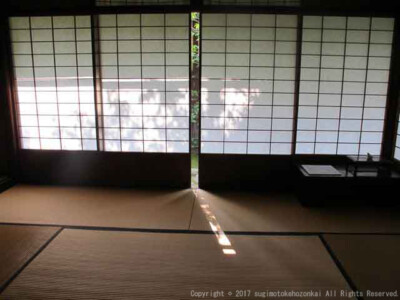
It was expanded around 1887 as a room for the 7th generation couple who got married in 1894. To popularize the Sukiya style of architecture, Kitayama area polished log pillars are used. It is a calm and gentle space. In winter, the sunlight reflected by the shoji doors facing the alleyway garden is beautiful, and in the summer, the shoji is replaced by a reed door to give a different feeling.
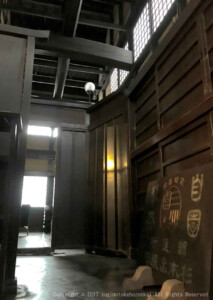
This ground is called "Tataki". The upper part has a colonnade called "Hibukuro", where thick "Ushibari” beams are built. At the top, there is a square frame window called “Kemuri dashi" devised as a way to improve the smoke ventilation.
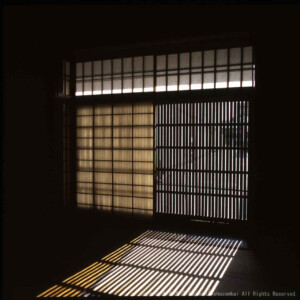
At the time of its founding, it was used as the priest from Nishi-Honganji Temple’s waiting room. One of the construction’s features is that the outlook from the inside to the outside of the room is very well done because it is difficult to see the inside from the outside. The sliding doors made of indigo dye rubbing paper are influenced by the head of the Yabunouchi tea ceremony school.
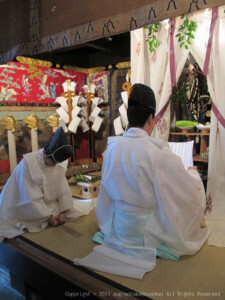
This room was used as a shop for kimono stock.. Currently, the “god” is enshrined as the ornaments of the "Hakugayama" float used during the Gion Festival in July.
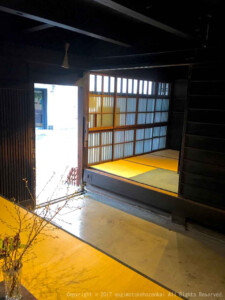
This room was used as a shop for kimono stock.. Currently, the “god” is enshrined as the ornaments of the "Hakugayama" float used during the Gion Festival in July.
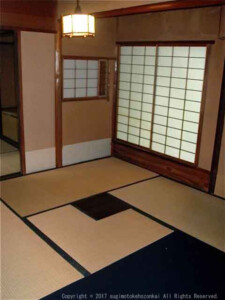
It was renovated around 1938 and became a small room of 4 Tatami mats. Although the recess for boiling the tea kettle has been placed, it is not an official tea room construction, but it can be seen that you have tasted "a cup of green tea" just for personal enjoyment. The hanging wall with a beautiful curved shape placed at the corner was designed according to the idea of the head of the Yabunouchi tea ceremony school.
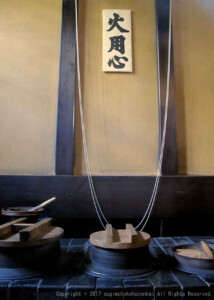
Originally it had seven range burners for daily cooking but shrank to four ranges on account of the decreasing number of employees. The range using black blocks is a common style used for daily cooking. Since the Sugimoto family has followed the doctrine of Jodo-shinshu Buddhism, and does not observe anything about Shinto, there is no "round shaped clay range" used only for cooking for Shinto Gods.
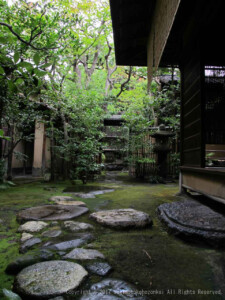
The garden is a work by a master of the house of the Yabunouchi tea ceremony style. A big, flat stone that is set up exactly like the stone called “Mitsukosode-ishi” that remains in the Yabunouchi master’s tea garden, shows its characteristics well. Although “Tsukubai” wash basin is not present, the quiet appearance of garden trees, undergrowth and green moss is exactly "a small mountain side in the city".
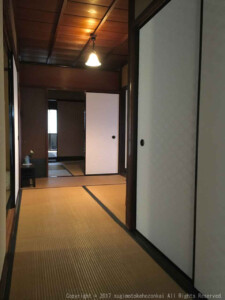
At the time of construction, it was used as a corridor of 7 tatami-mats which led to the Buddhist altar room from the priest’s waiting room. It seems that much consideration was given to the high ranking priest invited from Nishi-Honganji temple. The beauty of the elegant shine of the printed sliding doors is also one of this room’s highlights.
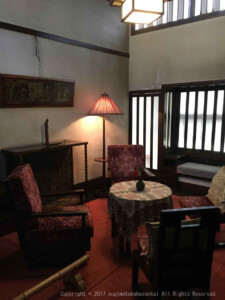
This room was renovated from Japanese-style to a Western-style in 1929. It is using cork for flooring and the interior is designed conscious of the Art Deco style. The ceiling height was adjusted by raising a part of the ceiling to the height of the second story.. The furniture was ordered at the Osaka Mitsukoshi Department store. In those days, a characteristic of Japanese furniture was that it was designed so as not to make a dent on the floor by installing a crosspiece to the bottom of the legs of the chair.
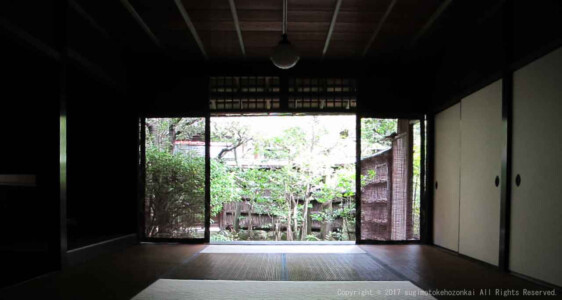
The north-facing main guest room has dark colored walls that seem black but look somewhat different in color due to the change of faint lighting, which can be said to reflect the beauty of the unseen.
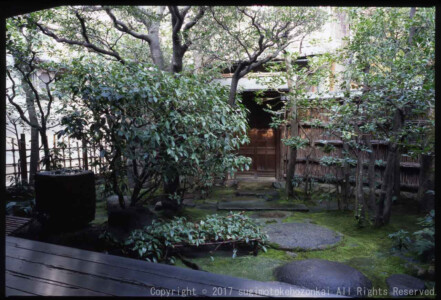
The Main Garden(zashiki niwa)
A stone engraved with the year 1590 lies under a large hand basin in the garden facing north of the main guest room. Originally it was a bridge girder from the Gojo Bridge. There is also a large old roof tile of Todaiji Temple in front of it. The deep eaves are kept clear without setting pillars by the technique called "Haneiki", and devised so as not to block the view into the garden. A beautiful single Kitayama polished beam is passed under the eaves, and the view is unobstructed.._

